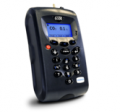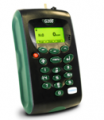MRU Instruments - MRU Gas Analyzer

| Address | 625 Peachtree Street Cocoa, Florida 32922 |
| Phone | +1 (237500) 223-7 |
| Website | www.viasensor.info/ |
| send message | |
| Contact person | Ramon Rivera |
| Working hours | Monday to Friday : 9 to 5 |
Viasensor is a leading provider of environmental analyzers, equipment and products used in clinical environments, hospitals, laboratories, incubators, Federal Border-Custom agencies, food production and indoor air quality (IAQ).
Incubator Analyzer
Traditionally laboratory incubators need to run at a constant temp, humidity and CO2 level (approx 5%) to maintain the correct conditions for, the best growth of cell cultures, embryos for in vitro fertilization
The incubators themselves will have a built in monitoring system for CO2, but because it is critical that these levels are kept constant, a portable analyzer, such as the G100, can quickly and accurately confirm the CO2, O2, humidity and temperature levels. This functionality is required by lab technicians, but is also an important part of the toolkit for service engineers for when incubators are being serviced. Learn about the G100 & G110.
Indoor Air Quality Analyzers
The background level of CO2 in air is approx 300-400ppm and any significant increases over time (each country will have own exposure limits) can cause issues with staff who are constantly working in this environment (tiredness, headaches, lethargy etc). While CO2 is the key factor in sick building syndrome, O2, humidity and temperature levels are also significant. Learn about the G150.
Medical Analyzers
N20 is used as a sedative in hospitals - particularly operating rooms, x-ray departments, dental practices and veterinary clinics, where medical staff is at risk of long term exposure. The maximum exposure level considered acceptable over an 8 hour period (known as a time weighted average, TWA) is set as a maximum limit country by country.
Monitoring may be by placing an analyzer within a room, set up with a trigger alarm and data log. Alternatively, a unit can be attached to the user (on a belt clip) with the tube attached just over the users shoulder to record levels of N20 in the breathing zone (more critical for dentists and in operating rooms, where the user may be spending a lot of time around the main source of the gas). Again immediate alarms or TWA can be recorded to record exposure. Leak detection in N2O storage areas is also important.




